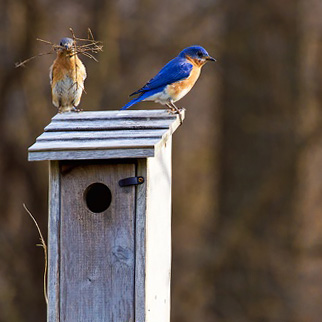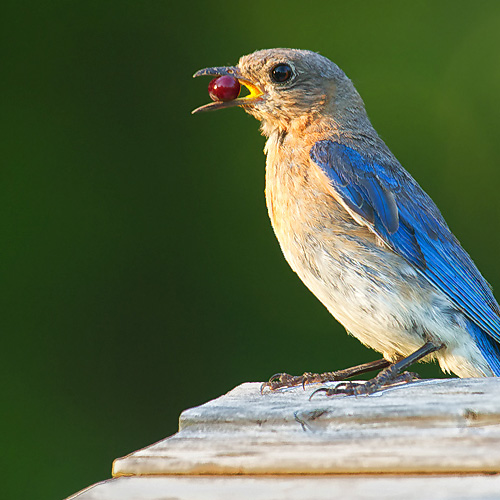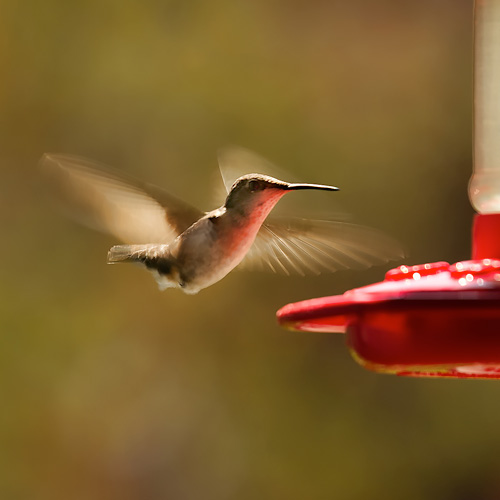The American naturalist John Burroughs traveled widely to observe birds. He celebrated their beauty, behavior, and songs in many of his essays and books. There’s no need to travel far to see an assortment of tiny songsters during the great spring migration season. Millions of birds will pass through the Chicago area during the season. Given good weather, tens of thousands of these spring migrants may fly over in one night alone. You might not see them right away, but at dawn and dusk, they put on a great performance with myriad melodies and courtship calls.
“The beautiful vagabonds, endowed with every grace, masters of all climes, and knowing no bounds—how many human aspirations are realized with their free, holiday lives, and how many suggestions to the poet in their flight and song.” — John Burroughs, Birds and Poets, 1877

The Garden is home to many species—chickadees, song sparrows, nuthatches, woodpeckers, brown thrashers, and catbirds—to name just a few.
During the spring migration season, an assortment of warblers (about three dozen different types), kinglets, thrushes, tanagers, flycatchers, orioles, hummingbirds, and others will cruise through, stopping for insects and water before they continue their journey north.
Many of the songbirds spotted at the Garden are neotropical migrants—they spend winters in Mexico, South America, and other places where insects are available year-round, but they migrate north each spring to find suitable nesting sites where they’ll raise their young before returning south in autumn.

Invite them in
You can encourage migrating as well as year-round birds into your garden by offering them food, water, and shelter. Start with easy-to-clean bird feeders. Place the feeders at different heights. Some birds (sparrows, juncos, towhees, cardinals, mourning doves, and others) often feed on the ground or on a slightly elevated feeding platform. Woodpeckers, titmice, nuthatches, chickadees, finches, and redpolls tend to prefer feeders that are 4 to 6 feet off the ground. (One note of caution—if neighboring cats roam your garden, do not place bird seed on the ground.)
Spring is an important time of year for bird feeding.
That’s because the seeds in many natural areas and forest preserves are often depleted by now. Sunflower seeds, millet, thistle, cracked corn, unsalted peanuts, and dried fruit attract a wide range of birds. Keep fresh seed in the feeders and offer suet cakes (blocks of rendered beef fat) as an extra energy entree. Wash the feeders occasionally with soap and water, dry them, and then replenish the seed. Suet attracts several species from the tufted titmouse and chickadee to nuthatches and woodpeckers.
Birds need water, especially during dry periods when there are no puddles available. Birdbaths should be shallow. If you have a deep birdbath, place a large flat stone in it where small birds can stand. Fill a birdbath or put a large shallow saucer on the ground and replace the water often. Some garden centers and big-box stores offer misting devices that spray a very fine mist over the birdbath, which is very attractive to birds when they’re preening and cleaning their feathers. On hot days, hummingbirds are known to fly through the mists to cool off.
Nesting boxes attract house wrens, chickadees, sparrows, and other cavity-nesting birds. Choose boxes made of cedar or other untreated woods rather than metal, which can cause temperatures inside the box to soar on hot days. Look for nest boxes that are easy to open and clean once the birds have left the nest.
Evergreens such as cedars, junipers, yews, spruces, and pines with dense greenery provide nesting sites and cover from predators. The seed-bearing cones of spruce and the fleshy, pale blue berries on Eastern red cedar are an edible bonus.

Plant a Bird Buffet
When buying plants in the spring, consider whether they offer fruits for birds. For example, in summer, when the fruit is ripe on native serviceberries (Amelanchier), birds will quickly gobble them up. Dogwood, staghorn sumac, northern bayberry, and crabapples offer fruits in the fall and winter. Robins flock to the native vine, Virginia creeper (Parthenocissus), when the berries are ripe in late summer. While many birds rely on seeds and insects, some migrating birds will eat dried crabapples in fall and winter. The seedheads of coneflowers, black-eyed Susans, cosmos, and native grasses feed sparrows and goldfinches in fall.
Hummingbirds are flying jewels that stop in our gardens in spring and again in late summer when they’re migrating south. Flowers and feeders filled with sugar water may encourage them to stay in your garden in the summer.
Written by Nina Koziol, garden writer and horticulturist who lives and gardens in Palos Park, Illinois.
Photography by Nina Koziol and Ellen Hodges.

